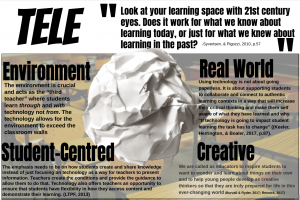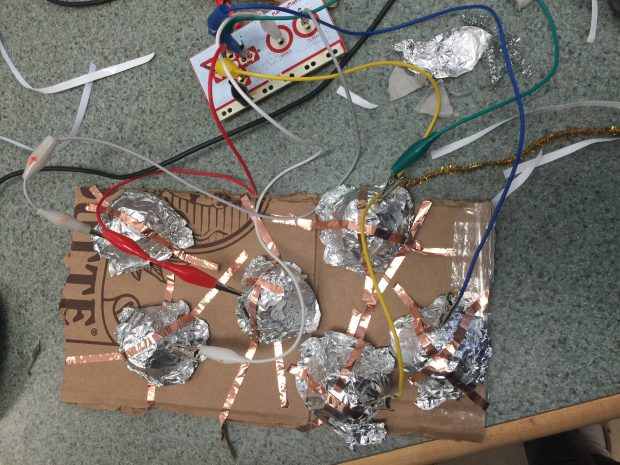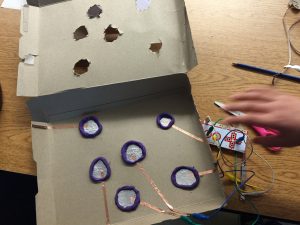Technology is here to stay. Yet education is still one of the only businesses asking whether or not we should use technology. If we take the time to understand the constraints of how these technologies influence what teachers do or do not do in their classrooms we have the opportunity to rethink teacher education and teacher professional development. If we fail to do this we run the risk of teachers having and inadequate experience with technology for teaching and learning (Koehler, Cain, & Mishra, 2013). Many teachers having not been educated in a digitally rich environment do not feel they are sufficiently prepared and do not appreciate or value technology as relevant to teaching and learning (Koehler, Cain, & Mishra, 2013). We are battling the changing of mindsets instead of changing technology. At the end of the day we have to remember that whether we like it or not “technology is used to support student-centred, personalized, authentic learning for all students” (Learning with Technology, 2015). Aristotle himself declared that the ultimate test of understanding is based on the ability to transform what you know into the ability to teach (Shulman, 1986). It is imperative to ensure that teachers have an experience of technology that translates to actual application to the classroom. Teacher training thus far has equated to the click training of Pavlov’s Dogs. “Click here” has not transformed into actual influence in the classroom as technology has been long held as siloed professional development. We have spent many years responding to the lack of integration by deskilling of teachers and promoting the use of black masters, teacher guides, and recipes for learning. We have reduced teaching to a transmission of knowledge. We in many ways have done this to ourselves hiring teachers who are teaching with their nose in a book in combination with the expectation of teaching to the standardized test. Here and now we have the opportunity to achieve standards without standardization (Shulman, 1987). One sure fire way to make sure that technology is part and parcel with everyday knowledge and content is to stop inservicing teachers that technology is a separate and independent knowledge domain (Mishra, & Koehler, 2006). There are those who demand that we fire any teacher who will not comply with the mindless transmission of ready made knowledge. . (Loveless & Griffith, 2014). Have we gone to far in the deprofessionalization and deskilling of teachers as experts who can navigate the content, knowledge, and needs of the individual student?
My role is to ensure that PD transcends simple click training that is outside of the context and content of the classroom. This type of professional development is neither trivial nor obvious when we are asking teachers to convert these tools to actual classroom practice (Mishra, & Koehler, 2006). Teachers do not simply be need to be trained in the use of technology. There needs to be an established purpose, environment, and use of tools than enhances the content alone in a pedagogical way that meets the individual needs of the student. The TPACK we were presented with parallels the Learning and Technology Policy Framework here in Alberta. We are invited to have a conversation with all stakeholders about how technology enhanced environments affect student centred learning. Take for example the examination and demonstration of learning for this UDL (Universal Drawing for Learning…excuse the pun). Students were asked to examine the nature of Osmosis of Cells. In this case students had the freedom of expression based on their needs, interests, and abilities using a Google Drawing or traditional paper to share the understanding of the YouTube video demonstration. In another example students were able to represent their understanding of the excretory system using a sequence of GIFS. In each case the teacher was able to navigate the knowledge and content based on the needs of the child using technology as a vehicle for this type of transformative learning.
Here you can also see my reflection of the TPACK with the LTPF found here in Alberta
References:
Koehler, M.J., Cain, W., & Mishra, P. (2013). What is technological pedagogical content knowledge (TPACK)?
Learning with Technology | Overview. (2015, September 23). Retrieved from https://education.alberta.ca/learning-with-technology/overview/
Loveless, D & Griffith, B. (2014). Critical Pedagogy for a Polymodal World. Sense Publishers. Read Chapter 1, Pages 1- 22
Mishra, P., & Koehler, M. (2006). Technological pedagogical content knowledge: A framework for teacher knowledge. The Teachers College Record, 108(6), 1017-1054.
Shulman, L.S. (1986). Those who understand: Knowledge growth in teaching. Educational Researcher, 15(2), 4 -14
Shulman, L.S. (1987). Knowledge and teaching. The foundations of a new reform. Harvard Educational Review, 57(1)1-23













